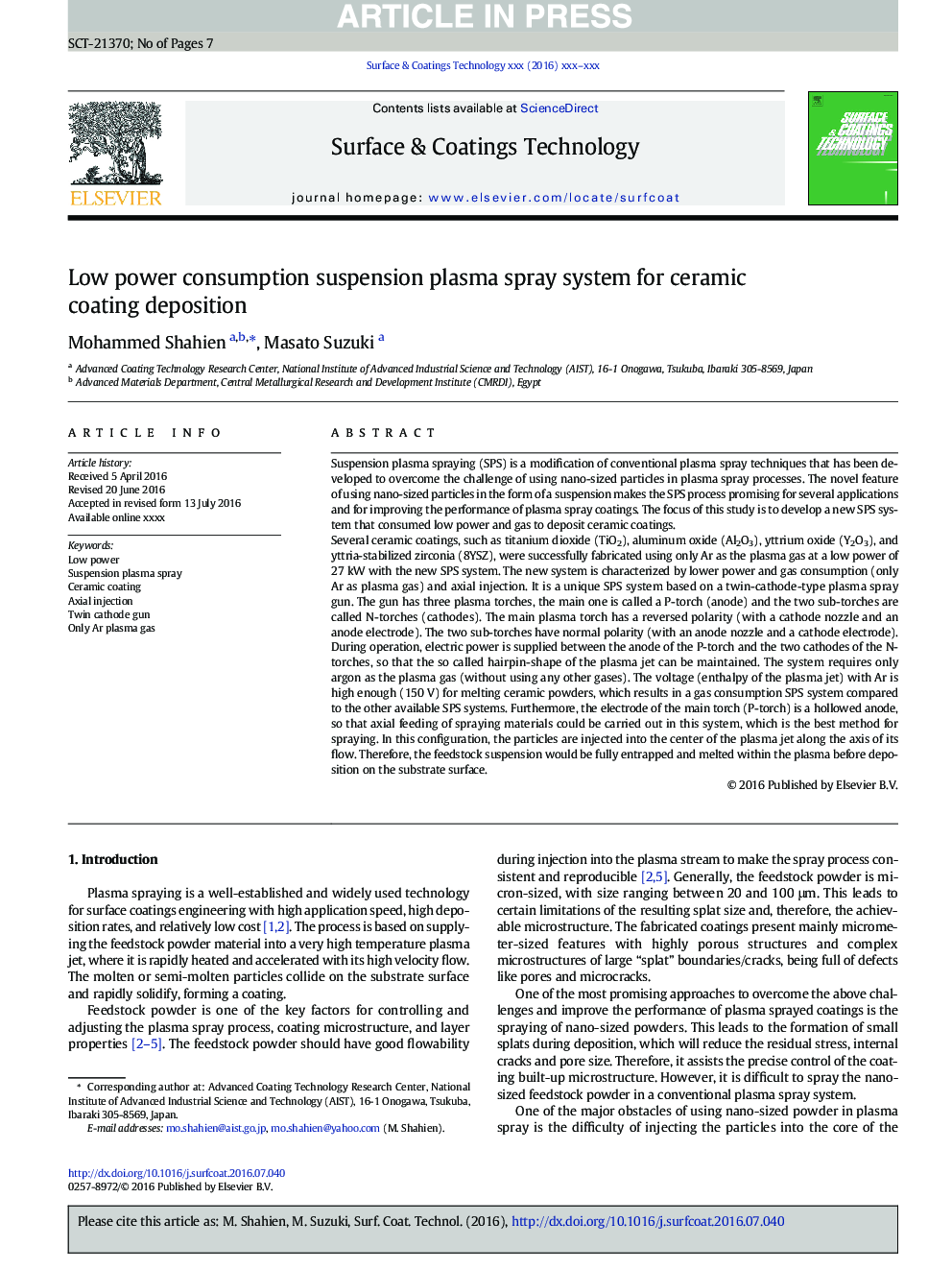| Article ID | Journal | Published Year | Pages | File Type |
|---|---|---|---|---|
| 5465436 | Surface and Coatings Technology | 2017 | 7 Pages |
Abstract
Several ceramic coatings, such as titanium dioxide (TiO2), aluminum oxide (Al2O3), yttrium oxide (Y2O3), and yttria-stabilized zirconia (8YSZ), were successfully fabricated using only Ar as the plasma gas at a low power of 27Â kW with the new SPS system. The new system is characterized by lower power and gas consumption (only Ar as plasma gas) and axial injection. It is a unique SPS system based on a twin-cathode-type plasma spray gun. The gun has three plasma torches, the main one is called a P-torch (anode) and the two sub-torches are called N-torches (cathodes). The main plasma torch has a reversed polarity (with a cathode nozzle and an anode electrode). The two sub-torches have normal polarity (with an anode nozzle and a cathode electrode). During operation, electric power is supplied between the anode of the P-torch and the two cathodes of the N-torches, so that the so called hairpin-shape of the plasma jet can be maintained. The system requires only argon as the plasma gas (without using any other gases). The voltage (enthalpy of the plasma jet) with Ar is high enough (150Â V) for melting ceramic powders, which results in a gas consumption SPS system compared to the other available SPS systems. Furthermore, the electrode of the main torch (P-torch) is a hollowed anode, so that axial feeding of spraying materials could be carried out in this system, which is the best method for spraying. In this configuration, the particles are injected into the center of the plasma jet along the axis of its flow. Therefore, the feedstock suspension would be fully entrapped and melted within the plasma before deposition on the substrate surface.
Related Topics
Physical Sciences and Engineering
Materials Science
Nanotechnology
Authors
Mohammed Shahien, Masato Suzuki,
